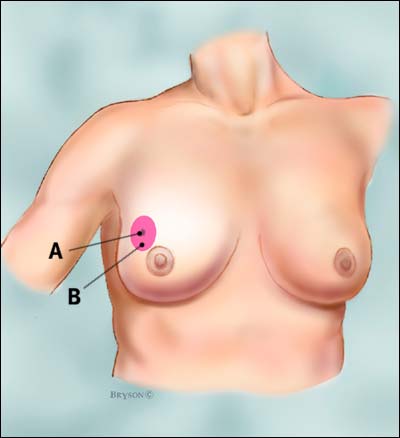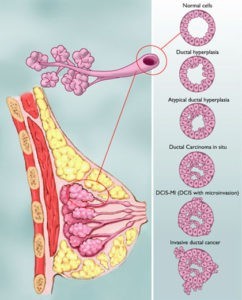
Diagnosed with Cancer? Your two greatest challenges are understanding cancer and understanding possible side effects from chemo and radiation. Knowledge is Power!
Learn about conventional, complementary, and integrative therapies.
Dealing with treatment side effects? Learn about evidence-based therapies to alleviate your symptoms.
Click the orange button to the right to learn more.
- You are here:
- Home »
- Blog »
- side effects ID and prevention »
- Thermography and Breast Cancer
Thermography and Breast Cancer

“No single tool provides excellent (breast cancer) predictability; however, a combination that incorporates thermography may boost both sensitivity and specificity.”
Thermography is a medical screening method for detecting breast cancer and other breast disease using infrared detectors. This procedure is non-invasive and does not use radiation. It is usually complementary to mammography and I can find no reports of harm resulting from the process.
Mammography misses some breast cancers for a variety of reasons, mostly because of very dense breast tissue. Thermography offers another (non-invasive) option. I do not believe it would be the perfect stand-along breast cancer detection method.
Many questions come up regarding thermography and definitive answers are hard to find.
“Do breast cancer patients have to ask for it?” This is simply my opinion, but I can not imagine a doctor I have met who would bring up the subject. They generally adhere to the “gold standard” and seldom deviate from it. However, there must be some out there who might want to use it.
Is it available everywhere? The answer is no. There seems to be a lot of competition amongst those who do provide thermography. Some claim that others have inferior machines does not properly perform the thermography in a variety of ways, and scam patients in order to do more imaging than necessary.
Does insurance pay for it? My guess is that would be rare. One site I found is a .com from Oregon that has a “frequently asked questions” page. They do submit to insurance, but they do not say how often insurance pays.
Here is the Oregon site: http://www.infraredbreasthealth.com/faq.htm
It is a for-profit site and all such sites should be read with that in mind, though many are excellent.
At the bottom of the Oregon site, they link to another site (also a .com) that lists places to get digital thermography. It is: http://www.breastthermography.com/find-a-center.htm
As you can see, there are not many locations available using this particular method. There seem to be many groups out there saying they are the best and recommending only their own service.
For example, Dr. Mercola (I personally use his site frequently, but always very carefully because he is quite controversial and often sells the products he recommends) has his own thermography center: http://naturalhealthcenter.mercola.com/services/Thermography.aspx
I went to breastcancer.org to get the typical medical response about thermography. Here is the page: http://www.breastcancer.org/symptoms/testing/types/thermography.jsp
There were also doctors who answered questions from two women in a negative way. Here is one: http://www.breastcancer.org/news_research/ask_expert/06_2009/question_15.jsp and here is the other http://www.breastcancer.org/risk/ask_expert/2006_02/question_27.jsp
Both of the answers above essentially say that digital mammography is the way to go, and for many women that is absolutely true. Anecdotally, my friend and several others I know had annual digital mammograms that missed their cancers completely. In my friend’s case, just six months after her last digital mammogram she had five large tumors in her very dense right breast. They were discovered by my friend because she was in pain (I believe from lymph node swelling) and the tumors were visible. The same day that she was definitively diagnosed with an MRI and PET scan another digital mammogram was done and it showed only two shadows vaguely suggestive of a problem. Her tumors were all in the 5-centimeter range.
Clearly more studies should be done and while it does appear that thermography alone is not the best way to diagnose all breast cancer, in conjunction with other diagnostic tools, it seems to merit more respect than it is getting.
Mary Miller BC Profile in Courage
A comparative review of thermography as a breast cancer screening technique.
Integr Cancer Ther. 2009 Mar;8(1):9-16.
Kennedy DA, Lee T, Seely D.
Department of Research and Clinical Epidemiology, The Canadian College of Naturopathic Medicine, Toronto, Ontario, Canada.
Breast cancer is the most frequently diagnosed cancer of women in North America. Despite advances in treatment that have reduced mortality, breast cancer remains the second leading cause of cancer-induced death. Several well-established tools are used to screen for breast cancer including clinical breast exams, mammograms, and ultrasound. Thermography was first introduced as a screening tool in 1956 and was initially well accepted. However, after a 1977 study found thermography to lag behind other screening tools, the medical community lost interest in this diagnostic approach. This review discusses each screening tool with a focus brought to thermography. No single tool provides excellent predictability; however, a combination that incorporates thermography may boost both sensitivity and specificity. In light of technological advances and maturation of the thermographic industry, additional research is required to confirm the potential of this technology to provide an effective non-invasive, low-risk adjunctive tool for the early detection of breast cancer.
PMID: 19223370 [PubMed – indexed for MEDLINE]


